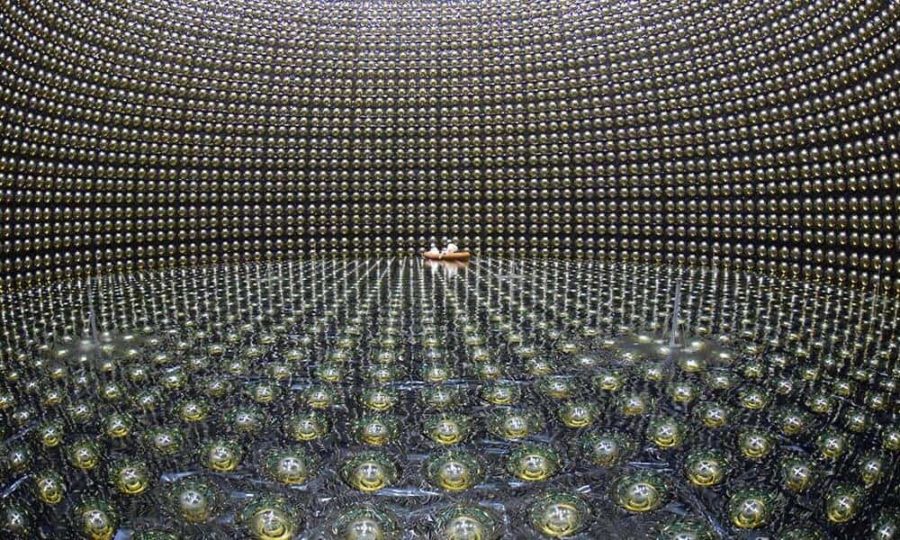Physicists love good symmetry—and that love is more than aesthetic appeal. One of the more important symmetries in all of science is the one between antimatter and matter.
Energy in the early universe was transformed into equal parts of matter and antimatter. Barring anything else, those equal parts should have destroyed each other and left us with no matter with which to make stars and planets, and people and dogs.
So physicists reason that something must have broken the matter-antimatter symmetry in the early universe, leaving us with a universe dominated by, well, stuff—one in which we (and dogs) can exist. The puzzle of how the matter-antimatter symmetry was broken is one of the great questions that particle physicists are trying to answer.
University of Rochester graduate student, Konosuke (Ko) Iwamoto, updated the physics world on this question at the 38th biennial International Conference on High Energy Physics (ICHEP), in Chicago earlier this month.
Iwamoto presented the highly anticipated findings from the Japan-based T2K neutrino experiment collaboration concerning the minute differences in the oscillations of subatomic particles called neutrinos and antineutrinos. (Almost every particle has an antimatter counterpart: a particle with the same mass but opposite charge.)
The new results suggest that the matter-antimatter symmetry may have been broken by neutrinos. T2K’s experiments show that neutrinos and antineutrinos behave differently—the imbalance may have disrupted the matter/antimatter balance. Though the results are not conclusive—there is a 1-in-20 chance that their results are a fluke—but physicists are excited about the findings and further data gathering from T2K and other experiments is underway.
“It is fabulous that Ko was chosen to present the findings of the T2K collaboration at ICHEP,” says Rochester professor of physics, Steven Manly. “ICHEP is the biggest international conference in particle physics and it was started in the 1950s by the then chair of Rochester’s physics department, Robert Marshak. Everyone still calls it the ‘Rochester conference.’”
T2K is a large, international particle physics experiment operating in Japan. In this experiment, an intense beam of neutrinos is produced at the Japan Proton Accelerator Research Complex (J-PARC), which is located on the east coast of Japan, approximately 100 miles north of Tokyo. 185 miles away, the beam detector is located deep inside a mine in the mountains of western Japan. Physicists involved in the experiment measure how the neutrinos oscillate from one of three types, or “flavors,” to another during the transit across Japan.
Professors Kevin McFarland and Manly lead the Rochester neutrino group on T2K. Members of the collaboration recently shared the 2016 Breakthrough Prize in Fundamental Physics “for the fundamental discovery and exploration of neutrino oscillations, revealing a new frontier beyond, and possibly far beyond, the standard model of particle physics.”


